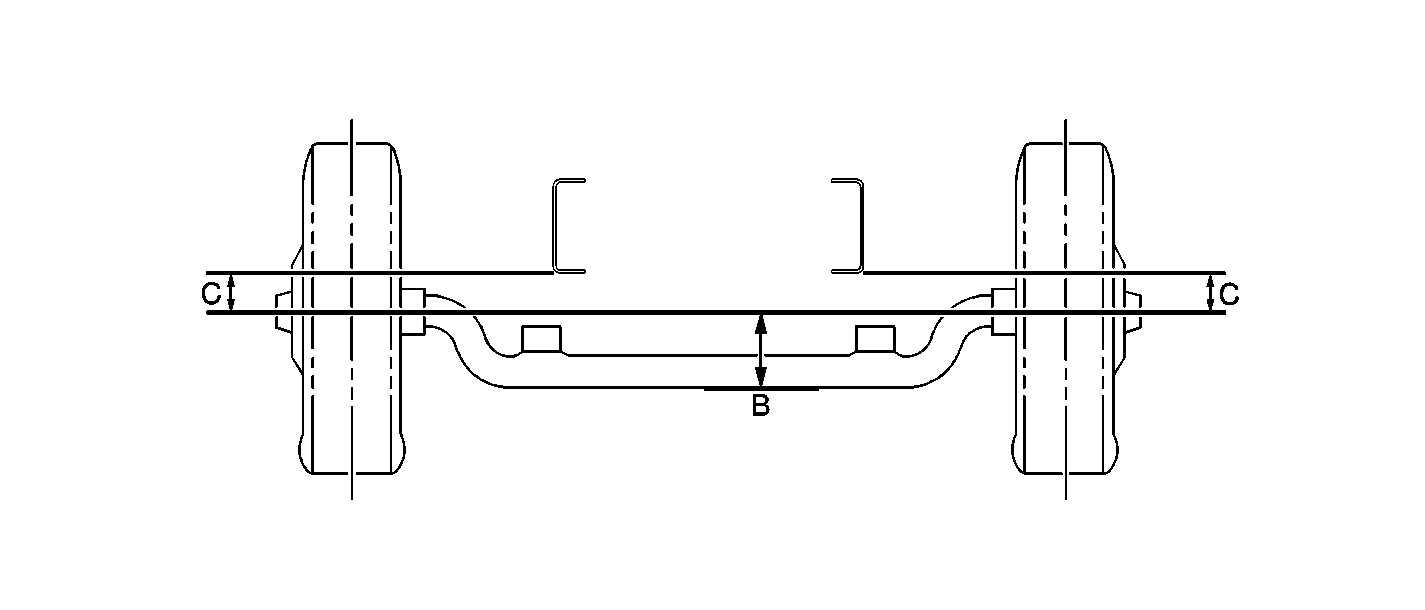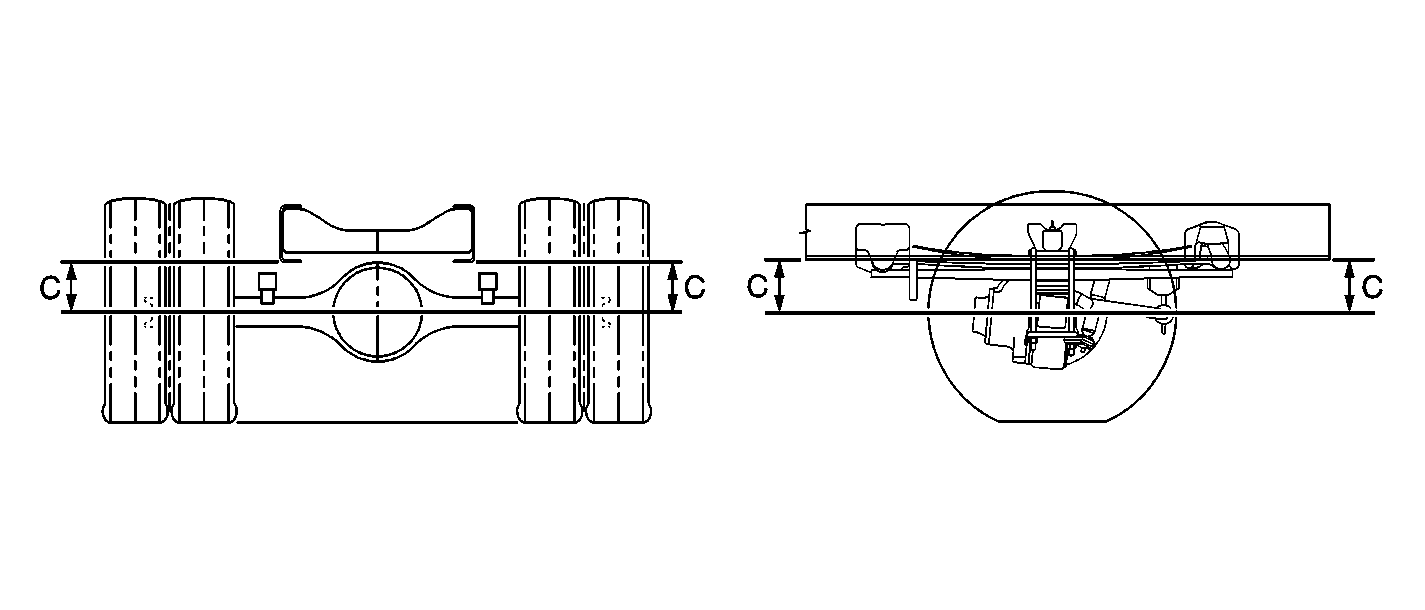Trim Height Measurements
Trim height is a pre-determined measurement relating to vehicle ride
height. Incorrect trim heights can cause bottoming out over bumps, damage
to the suspension components and symptoms similar to wheel alignment
problems. Check the trim heights when diagnosing suspension concerns
and before checking the wheel alignment.
Perform the following before measuring the trim heights:
- Set the tire pressures to the pressure shown on the certification
label. Refer to
Vehicle Certification Label
in General Information.
- Check the fuel level. Add additional weight if necessary to simulate
a full tank.
- Make sure the cab and rear compartment are empty .
- Make sure the vehicle is on a level surface.
- Close the doors.
- All dimensions are measured vertical to the ground. Trim heights
should be within 13 mm (0.5 in) to be considered correct.
Front Axle Height Measurement
The C height dimension measurement determines the proper ride height
for the front end of the vehicle. Vehicles without torsion bars have no
adjustment and could require replacement of suspension components.
The B height dimension measurement determines if the front axle is bent.
Check the suspension and steering components for any binding conditions.

- Measure from the axle center line to the bottom inside frame
rail in order to obtain the C height measurement for the front axle.
Measure from the axle center line of each front wheel to the bottom
of the axle beam to obtain the B height measurement for the front axle.
- The true C and B height dimension number is the average of the
high and the low measurements. Refer to
Trim Height Specifications
.
- Replace damaged or worn components as necessary.
Rear Single Axle Height Measurement
The C height dimension measurement determines the proper rear end ride
height. There is no adjustment procedure. Repair may require replacement of
suspension components.

- Make sure the vehicle is on a flat level surface.
- Measure the C height by measuring the distance between the rear
axle center line to bottom inside of frame rail.
- Check the suspension components for any binding conditions. Allow
the vehicle to settle into position.
- Measure the C height dimension.
- The true C height dimension number is the average of the high
and the low measurements. Refer to
Trim Height Specifications
.
- If these measurements are out of specifications, inspect for the
following conditions:
| • | Sagging front suspension |
| • | Improper tire inflation |
| • | Improper weight distribution |
Rear Tandem Axle Height Measurement
The tandem axle must be measured in three locations to be sure of proper
ride height. B, C, E height dimension measurements determine the proper rear
end ride height. There is no adjustment procedure. Repair may require replacement
of suspension components.

- Make sure the vehicle is on a flat level surface.
- Measure the C height by measuring the distance between the center
line of both axles at the center of the springs to bottom inside of frame
rail.
Measure the E height by measuring the distance between the center
line of front axle of the tandem to bottom inside of frame rail.
Measure the B height by measuring the distance between the center
line of rear axle of the tandem to bottom inside of frame rail.
- Check the suspension components for any binding conditions. Allow
the vehicle to settle into position.
- Measure the C, E, B height dimensions.
- The true C, E, B height dimension numbers is the average of the
high and the low measurements. Refer to
Trim Height Specifications
.
- If these measurements are out of specifications, inspect for the
following conditions:
| • | Sagging front suspension |
| • | Improper tire inflation |
| • | Improper weight distribution |



